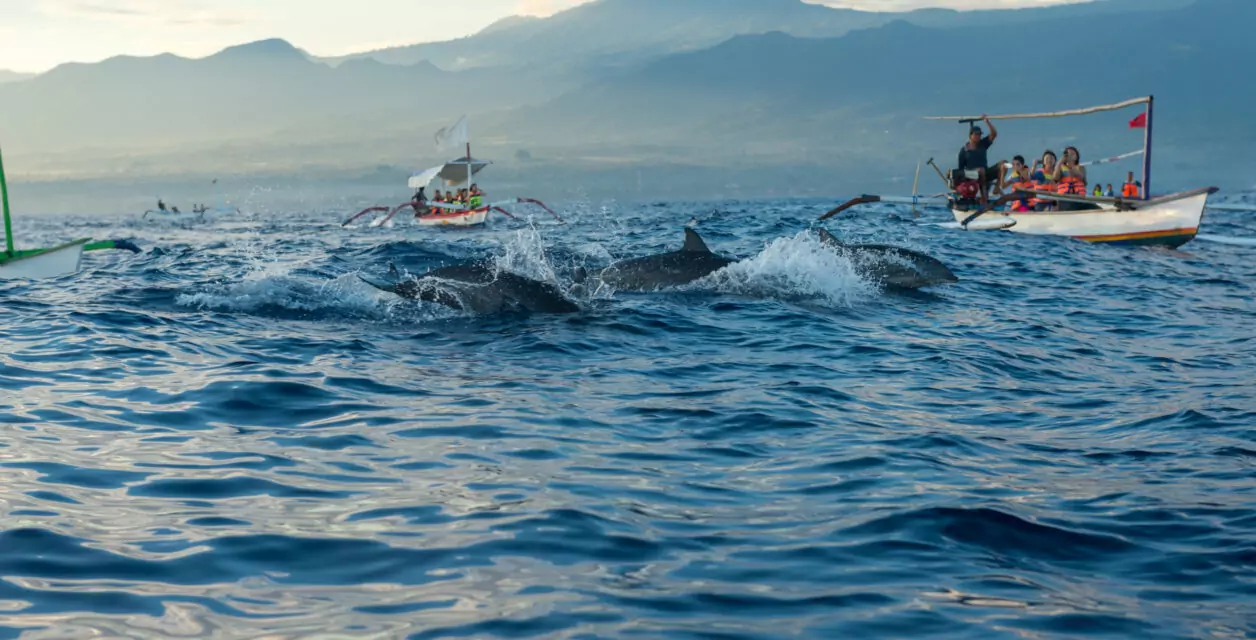Dolphins are the attractions that alone can serve as a magnet for pulling many customers to come to the area. If you are lucky enough and provide your operations in the areas known to have dolphin habitats, you should consider offering dolphin tours in 2021 if you have not started doing so yet. Follow these guidelines for finding out how this activity can be best delivered to both customers and dolphins.
Dolphin Species, Characteristics
and Where They Live
The U.S. Whale and Dolphin Conservation claims that there are 49 dolphin and porpoise species grouped into six families, describing each of which is way beyond this article’s scope. However, there are two most popular worldwide dolphin species called common dolphins and bottlenose dolphins.
Common Dolphin
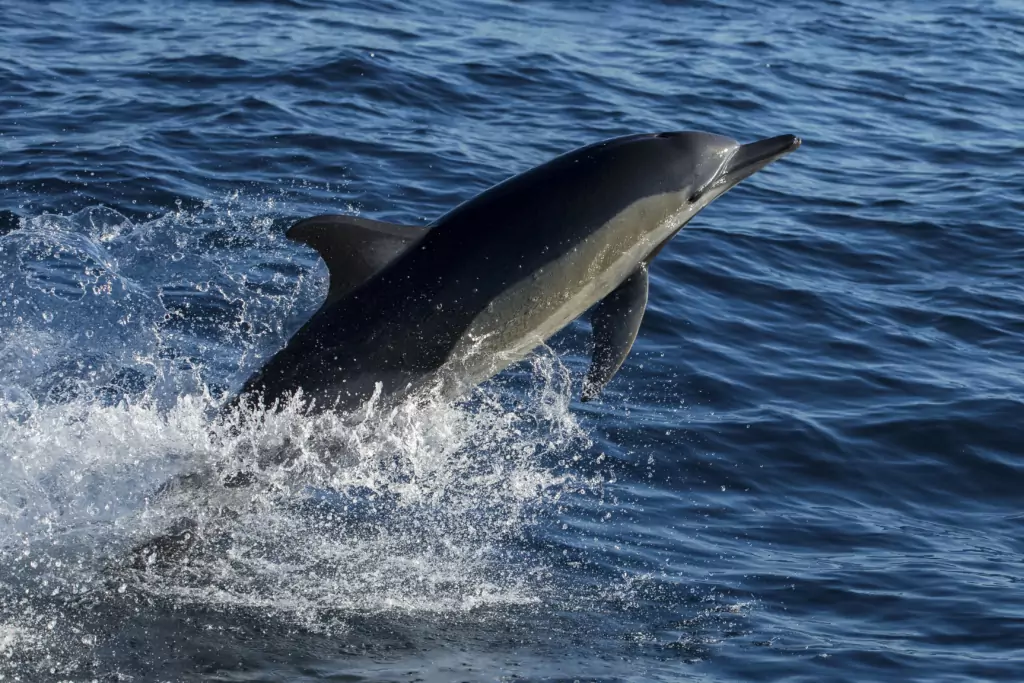
Common dolphin’s weight ranges between 180–330 lb (80–150 kg), and length can be up to 8.2 ft (2.5 meters) long, and males are usually longer and more massive. The back’s color pattern is dark, and the belly is white, whereas each side is colored light grey, yellow, or gold in front and dirty grey in back. They have long, thin rostra with up to 60 small, sharp, interlocking teeth on each side of each jaw. There is no specific number of inhabited common dolphins in North America. It does not have a well-studied behavior either because they are generally not captivated.
Nonetheless, according to Dolphins-World’s research, the Common Dolphin is very social, and they live in large pods. The number in a pod can be up to several thousand. They have a very complex hierarchy that keeps them orderly. In addition, they tend to create subgroups based on age and other factors.
This dolphin species is very active, and they seem to move through the water without much effort. This is because of their abilities to participate in somersaults, pitch poling, breaching, and bow riding.
You can find these dolphins living in bodies of water with a warm temperature. The Long-Beaked Common Dolphins are usually in the shallow waters, whereas the Short-Bake Common Dolphins can be in deeper waters up to 590 feet. They tend to do well in many areas as long as they have enough food and warm enough water. In the U.S., they are common along the west coast, from Baja California (including the Gulf of California) northward to central California.
These dolphins don’t tend to migrate like so many other species do. However, they will move around if necessary to find food and when there are frigid waters. They often do return to their home range, though whenever possible.
Common Bottlenose Dolphin
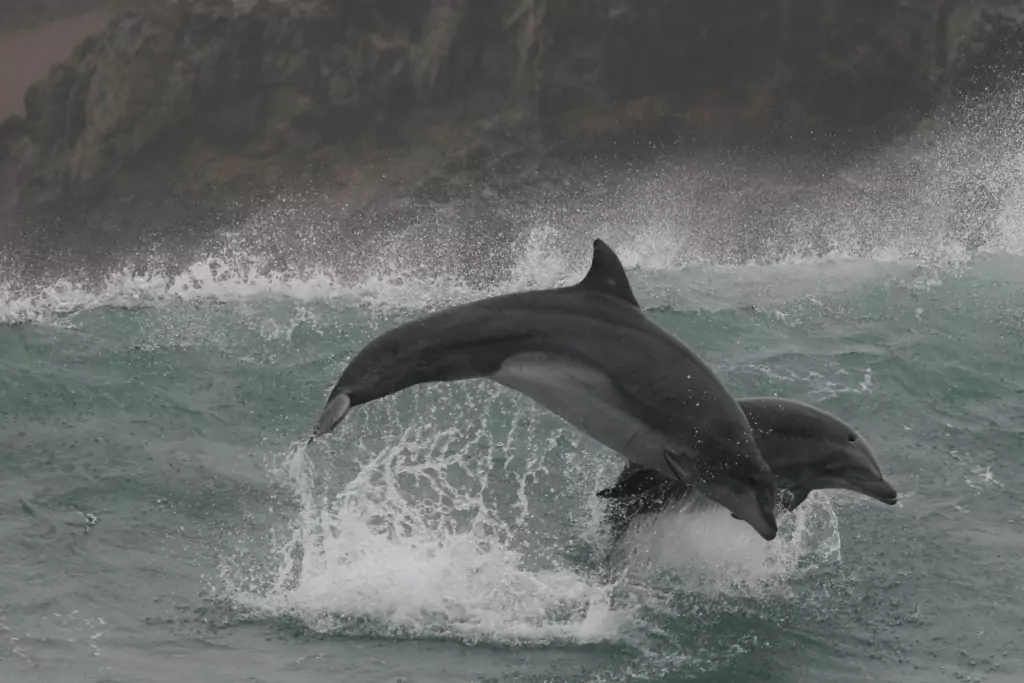
This species is a very close family member to the common dolphin covered in the previous section. The common bottlenose dolphin is grey in color and can be up to 13.1 ft long (4 meters), and weighs up to 1,430 lb (650 kgs). Same as common dolphins, males are usually bigger and heavier than females.
Common bottlenose dolphins usually live in pods just like their close relatives that typically number about 15 individuals. Still, on some occasions, it can be up to 1,000 mammals in the same group.
This species is moderately active both day and night. Observations betoken that they undergo daily activities, including socializing, feeding, resting, and traveling, where socializing comprises a significant portion of their daily activities.
Animals frequently ride on the stern wakes of boats or bow waves. Such behavior was likely adopted from ocean swells. They can also jump high up to 16 feet (5 meters) from the water’s surface, and land on their backs, bellies, or sides in a behavior called a breach.
The common bottlenose dolphin can be seen in the temperate, subtropical, and tropical oceans. The worldwide population has been estimated at 600,000, where about 100,000 are in North America’s Eastern Coast, 3,000 around Hawaiian islands, and less than 400 in California’s Coastal.
The coastal dolphins appear to adapt to warm, shallow waters. You can come across them in harbors, bays, and lagoons. Offshore dolphins, on the other hand, are adapted to cooler and somewhat deeper waters.
Best and Worst Dolphin Seasons, Days and Time
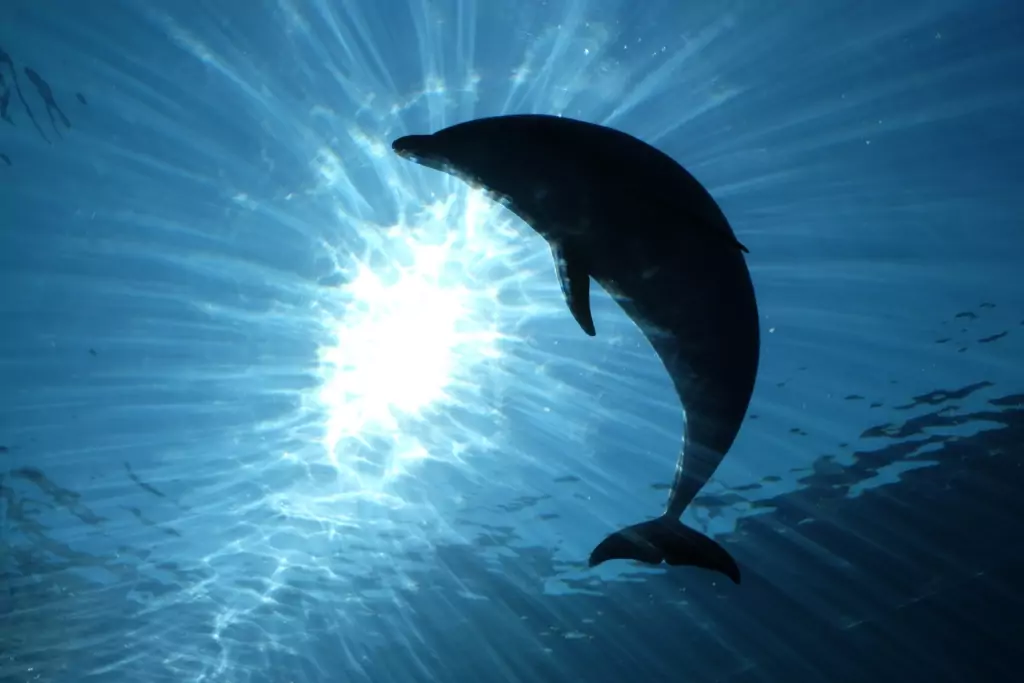
Research gives no clear answer for the best time of the year for spotting dolphins. Dolphin’s activity depends on the region’s climate. Tour operators should feel comfortable to run these activities year-round if it is warm. Dolphins enjoy tropical or subtropical weather types. It is the key to determining the best day and time for spotting them.
Spotting Dolphins:
Preparation and Techniques
Depending on where you are trying to do this from shore or on the water, your approach to spotting dolphins can vary. In both of the situations, you probably will want to find a way to suggest a customer get special accessories to enhance their experience. Here are some of them.
Sunglasses
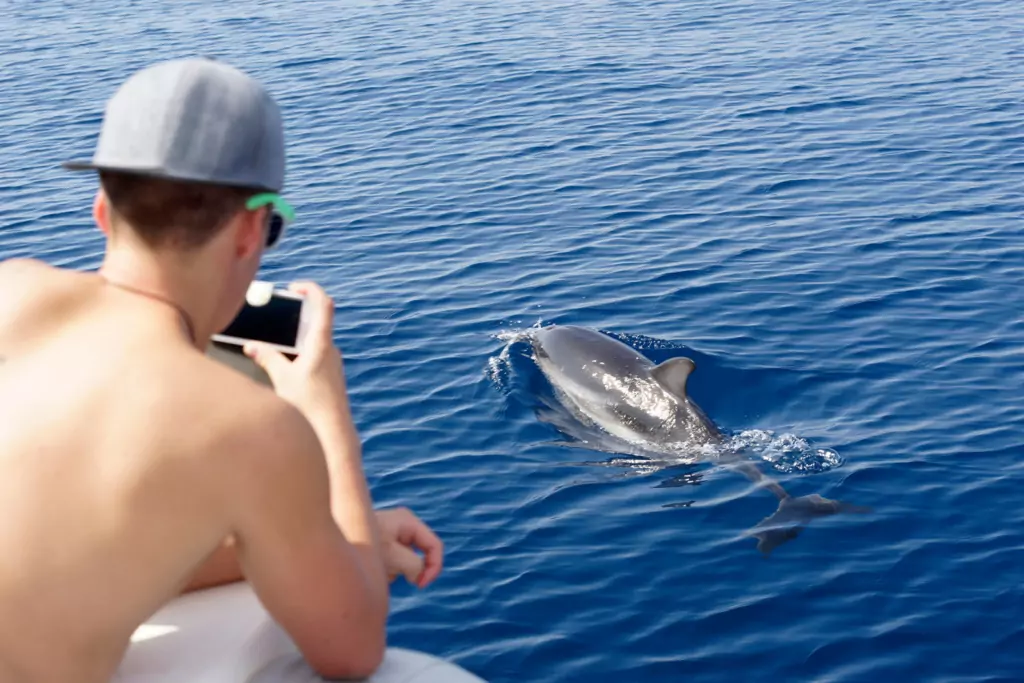
Sunglasses not only lets scanning the sea with comfort but also protect eyes from harmful rays. Another challenge can come from the light reflecting off the water. We encourage to have polarized sunglasses that cut through the troublesome glare for that reason. It also can become an opportunity for tour operators to rent this accessory out. This for the reason that customers might not have them of that type.
Binoculars

Binoculars play a big deal in enhancing your vision and provide you with the ability to see from long distances. They are especially great when it is relatively calmer days. The wider the lens is, the extra peripheral vision it will give when looking through it. This is especially helpful when looking for fast-moving dolphins. Purchasing professional binoculars might be costly, but it is a great investment to enhance the customer experience as an add-on option.
Hat and Sunscreen

Persistence is the key to succeed in this activity, we encourage to explain it to the customers before taking them. To that end, dolphin lookup’s time can be extensive, which is why basic protections like hats and sunscreen are essential. Consider selling them to the customers at your rental location and reminding them at the same time of the importance of it.
Dolphin Spotting Techniques
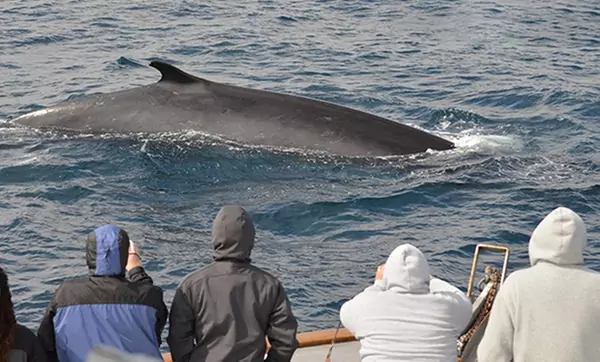
While there are many established techniques, scanning the horizon line is always a starting point. Start with your vision and see how far you can pick anything that pops up or moves on the horizon.
Scan the Horizon

The dolphins are usually seeking food and keeping an eye out for predators, making them always motion. If you spot an object at sea floating in place very still at the surface, the chances of it being wildlife are much lower. The chances increase if you see splashes. In this case, it is likely to be a living creature, yet still might not be a dolphin. Binoculars can confirm the situations when looking for objects in the water moving and spending just a little time at the surface between dives. With that being said, recommend your customers to use their own vision when looking for dolphins. As of binoculars, use only to confirm assumptions, not all the time.
Browse the Sky
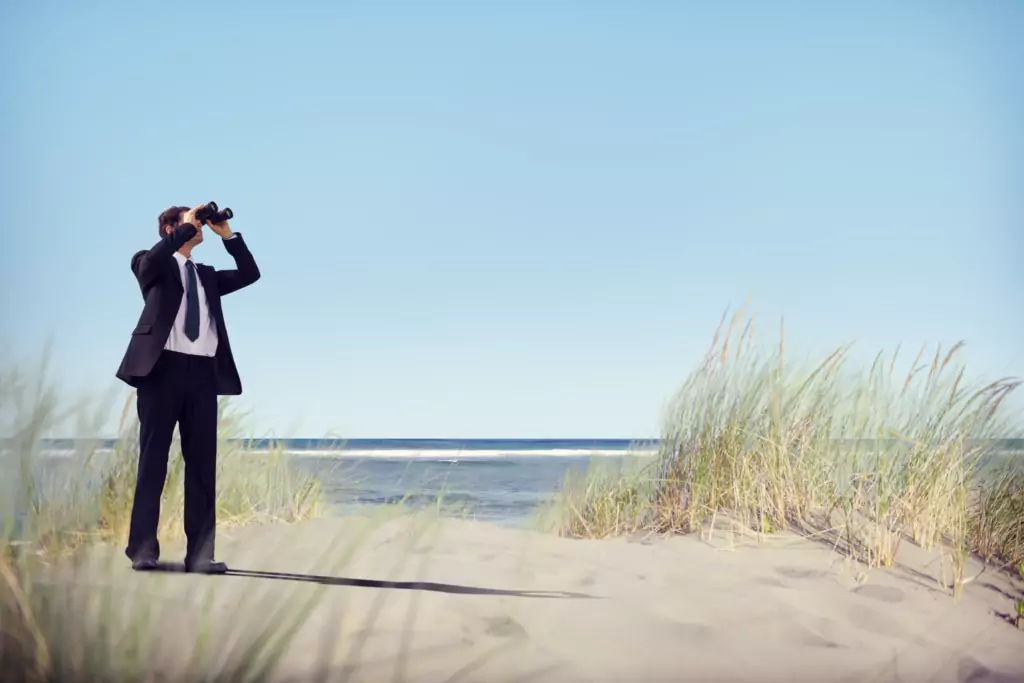
When scanning the horizon line, spend some time browsing the sky from time to time too. Birds serve as a crucial indicator of possible dolphins nearby because both consume the same prey. The more considerable the amount of birds feeding on the water surface, the safer it is to claim that underwater mammals are also feeding below the surface at that time.
Watersports Types with Dolphins Involved
Apart from renting out jet ski or WaveRunners, there are plenty of other water-based activities with dolphins’ interactions. Here are some of them:
Self-Guided Dolphin Tours
In this kind of activity, a customer would typically rent one of your watersports equipment and travel on their own to have some fun. If you happen to know that their primary reason is to look for a dolphin, while briefing on how to use the equipment, you could also highlight the spots on a paper map or their GPS to look for dolphins. In this case, passengers’ safety is crucial, and the safety of the mammals discussed earlier. Follow these guidelines specific to each water-based activity.
Non-Motorized Equipment Rental
Non-motorized watersports equipment, unlike the motorized one we discuss later in this blog, is safer to operate as it comes to dolphin watching. You have more time to react if you approach a dolphin and have your actions under more control. Look through the following tips for each activity.
Kayaks, Row Boating, and Stand Up Paddleboard
UK’s Independent news reporter recently shared the footage with captured dolphins swimming by the boat. Notice from the video that paddles are not in use when both mammals and humans observe each other. Its movement can hurt the little creature, so share this direction with your customers if they are lucky enough to see something like this.
Scuba Diving
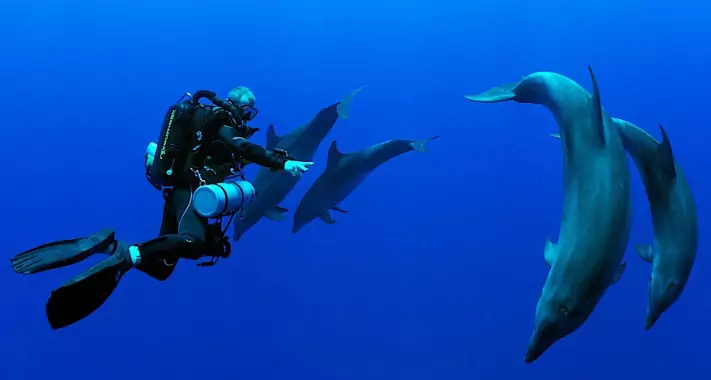
Apart from this being a great experience in the winter, which we discuss in our other blog, this activity can also be suitable for dolphin chasers. Ask customers to follow this set of rules when interacting with dolphins:
Rule #1: Tour operators’ reputation can be based on how they follow laws. The U.S., for instance, have certain restrictions to follow when interacting with mammals. Do some research and see what the case for your region is.
Rule #2: Some trends show that dolphins better interact with snorkelers than with divers, so the former can be better in that sense.
Rule #3: Customers should always remember that dolphins are wild animals at the end of the day. That is why they should let them stay in their comfort zone to avoid the actions of possible unpredictable behavior. Besides, dolphins have susceptible skin that can be hurt by watches, fingernails, rings, etc., which is why it is better to keep arms crossed or hands clasped.
Rule #4: Some dolphin behaviors can also be indicative. While discussing them all is beyond this article’s scope, some of them should be paid close attention to. For example, a repeated tail lob could be a sign of agitation, leaps, and spins point to the attempts to remove an annoying remora, and chuffing can be a possible sign of distress.
Rule #5: Know that it is all for real. Don’t get stressed or start feeling anxiety when you see dolphins, but continue to behave as you would naturally, not causing bad emotions to them.
Snorkeling
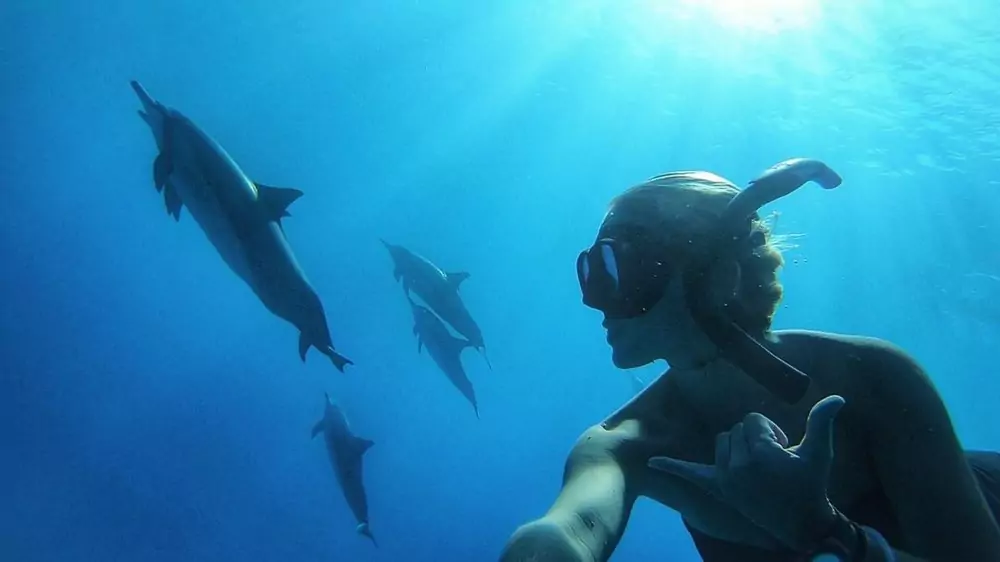
Snorkeling is a great water-based activity for families with kids, which we cover in this blog, and is suitable for when on the lookout for dolphins. Unlike scuba diving, your chances of being interacted with dolphins increase when you snorkel. However, research shows that seeing dolphins should happen accidentally, and, moreover, customers should not chase them, as it may impact negatively on their behavior. Here are some other pieces of information to stick to when swimming across dolphins in the wild:
Tip #1: Chasing dolphins can be stressful for them. It can disrupt their natural behavior and might have dangerous consequences for humans as well.
Tip #2: Always swim confidently and wait for them to approach you, not vice versa. Dolphins are very mood-dependent, so do not cause unnecessary stress to them.
Tip #3: Don’t touch dolphins and use the power flips if you see them approaching you to avoid close contact.
Motorized Equipment Rental
(e.g., Jet Ski, WaveRunner, and Pontoon Boats)
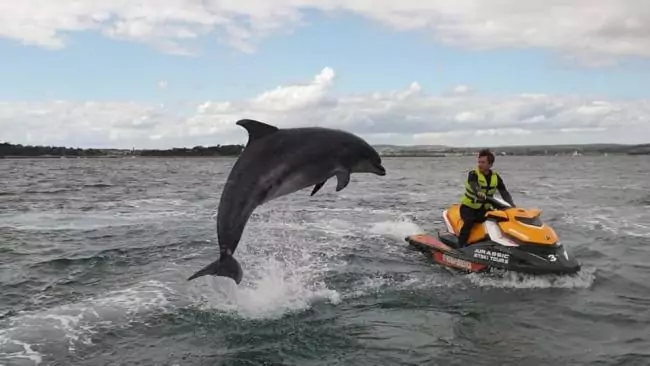
Motorized watersports equipment, unlike the non-motorized we discussed earlier in this blog, is more dangerous to operate as it comes to dolphin interaction. You have less time to react if you approach a dolphin and have your actions under less control. Look through the following tips for each activity.
Once you spot the dolphin, leverage the options available to you to approach them. Customers must be aware of how to use the options safely to make no negative impact on mammals. Share the following tips with both types of customers – using the vessel and themselves for swimming. NB: Some pieces of information might be applicable for guided tours with the captain as well.
If you rented out the watersport equipment to your customers (e.g., jet ski, WaveRunner, etc.), and you know that they are going for chasing dolphins, then advise them on the following interactions with marine animals:
Speed matters – If you are too fast, you’ll pass them by. Come to a stop, and they won’t hang out long. If you are too slow and dealing with the pod, they are likely to come and check you out by chasing each other over and under, along the side, and crossing underneath the vessel.
Keep the distance – encourage customers to observe them from a distance of at least 50 yards (150 feet) for the following reasons: Although dolphins have a reputation for being friendly, they are still wild animals who should be treated with respect and caution. Unfortunately, human beings’ interactions change dolphin behavior for the worse, letting them lose their natural wariness. For that reason, dolphins become more vulnerable to predator attacks and vandalism.
Avoid offering food – By nature, dolphins are hunters, not beggars, but if they get tempted by the food, they indeed take the easy route out. That way, not only it is illegal in some cases, but they also learn a lousy lesson to beg for a living, lose their fear of humans, and start doing untypical things, for instance:
- Have a false impression of people and die after becoming entangled with fishing hooks and rods.
- Get sick from eating human food, which can be fatal to them.
- They become aggressive and can even bite if they do not get the treat.
Guided Dolphin Tours
Guided tours, as opposed to the self-guided tours with rental equipment involved, can provide customers with an outstanding advantage for increasing their chances of seeing marine mammals if that is their primary purpose of spending time on the water. Typically, companies that already do that would not give the customer a 100% guarantee that they will see dolphins on their tour; however, the chances are that it will likely happen because the boat captain knows where to go for chasing them. As we already know, dolphins are wild animals; their behavior still needs to be better studied, and, thus, they are unpredictable in many cases. Consider offering the following types of tours for dolphin fans.
Dolphin Cruises
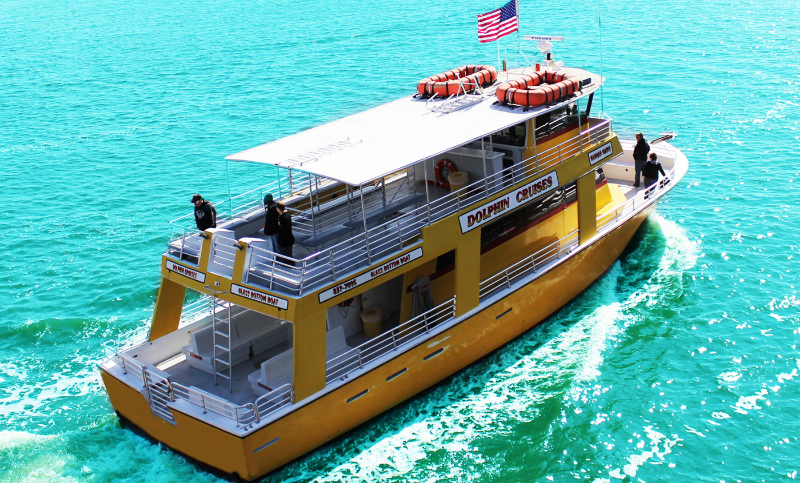
Owning a double-deck vessel operated by the captain can navigate travelers to the dolphin spots. Apart from being on a constant lookout for mammals, participants can also look for birds or be inside the bar if your vessel can have one. Check out how companies like Olin Marler already offer this type of tour.
Glass Bottom Boat Tours
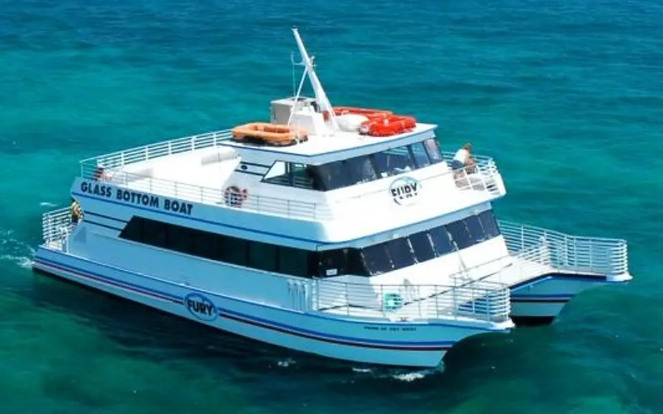
Another option for organizing the cruise can be with a vessel having a glass bottom! This can be even more selling than the regular one because it can keep passengers even more engaged. See how this type of tour is promoted by Key West Day Trip with Glass Bottom Boat Ride.
Jet Ski or WaveRunner Tours
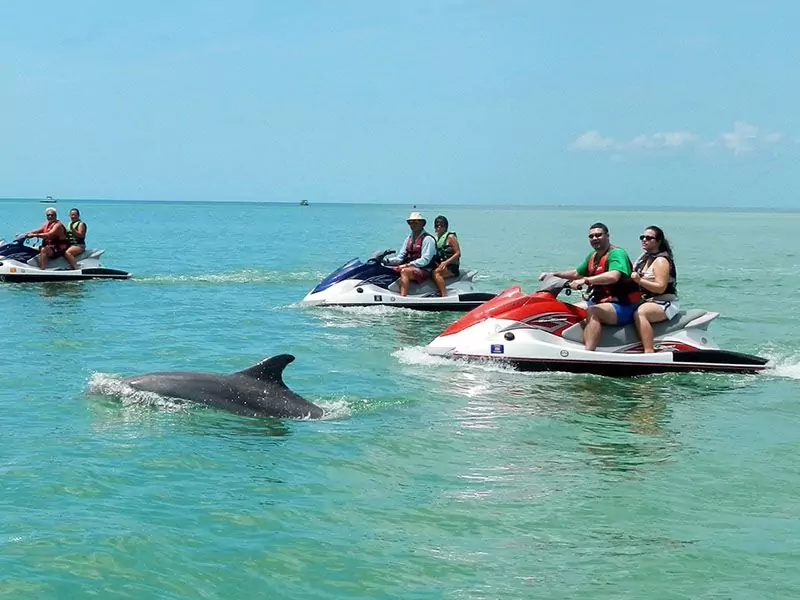
Owning jet skis or WaveRuneers can turn into a significant opportunity if you live in an area full of dolphins! Apart from renting it out to the customers, they can also choose a guided tour. See how Gilligan’s Watersports promotes it on their website.
Pontoon Boat Tours

While in most cases pontoon boats get rented out by customers for their own use, some watersport business models provide an add-on option to add a captain for operating a vessel. Typically, a customer’s reason to get one would be either their fear of driving or planning on drinking while using a boat. However, one of the other selling points for captains can also be that they will take to spots where dolphins are. See how Luther’s Pontoon Rentals showcases their way of doing this. Notice what they remind customers in the background.
Parasailing
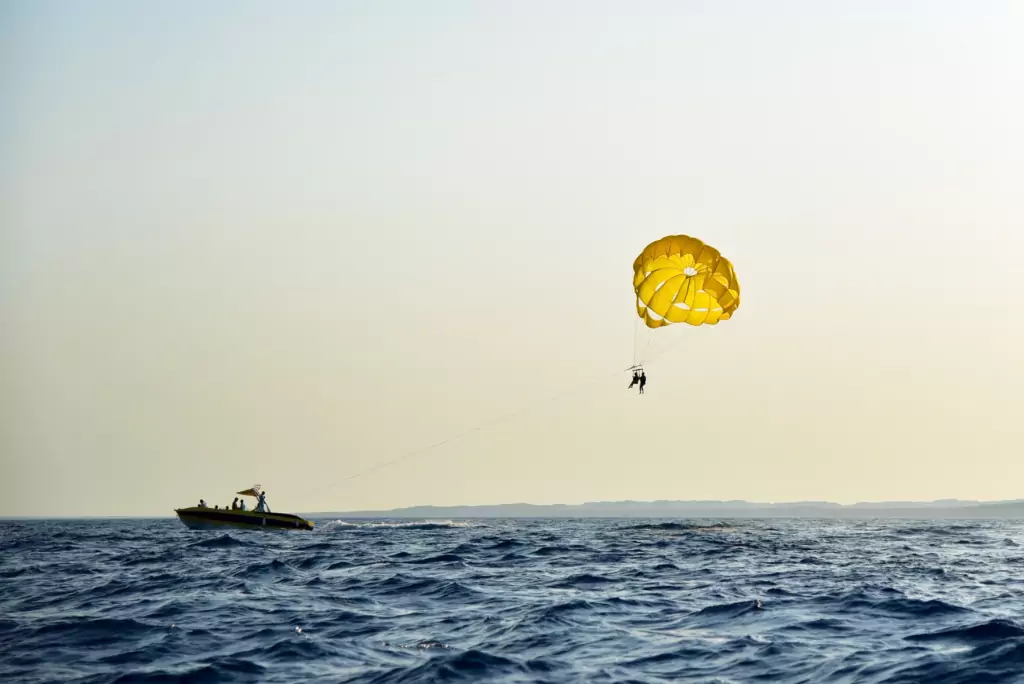
For the same reason as having guided tours on pontoon boats, customers can choose to go for parasailing if you let them know about the chance to see the dolphins if they try this out! These options can let customers see the dolphins from different angles and distances, unlike the previous ones. See how Captain Jambo’s promotes this type of activity with a focus on dolphins.
Conclusion
As it turns out, dolphins can provide an excellent opportunity for watersport tour operators to grow in the area, and, if you have not started your business yet, these mammals should be convincing enough for doing this. If your site is known to have dolphins, why not study the former to leverage the latter for high profits?
